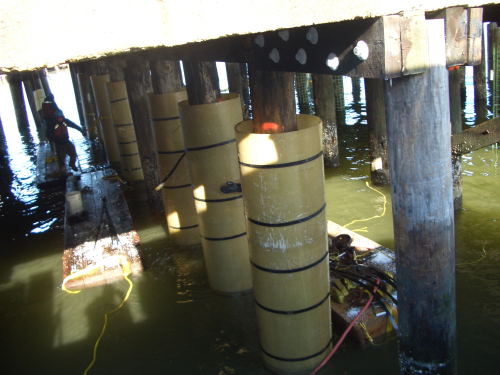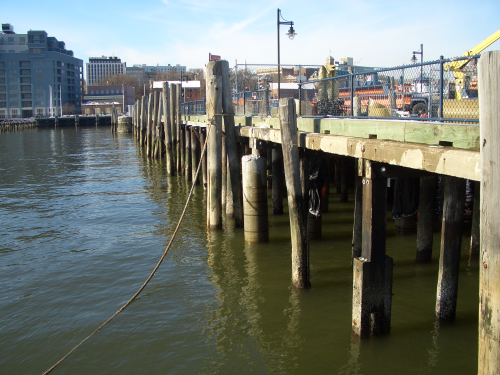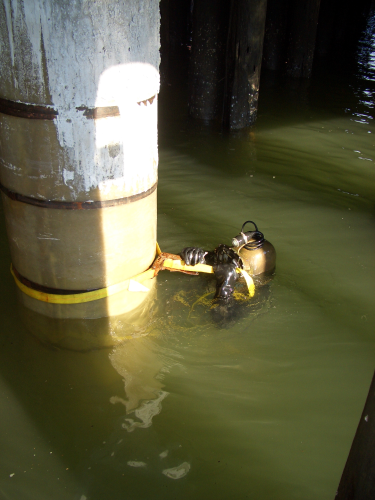


Made from chop strand mat and woven roving, the fibreglass reinforced thermoset composite provides resistance to abrasion while adding structural stability and impact resistance when concrete or grout is properly placed in the form.
The single seam FRP pile jackets are ¼ inch thick, have a diameter of 30 inches, are 20 ft long and weigh 400 lbs. They are chemically resistant to acids, alkalis and most solvents and are said to be durable in seawater.
Pennmax’s principal owner, John Pensiero, says: “The most critical performance spec was durability to extend the life-cycle integrity of the concrete. We chose a stay-in-place form to provide additional durability, protection, and economic efficiencies since no stripping was required. We also specified a ¼ inch form thickness to withstand ice / debris impact forces and prevent erosion of the concrete from tidal action.”
Underwater installation of FRP jackets
The MFG-CP pile jackets feature a slip-joint/ tongue-and-groove closure configuration said to make underwater assembly “easy for divers.”
Due to the 20 ft extension of the jackets in deeper water, the jackets utilised a bell-and-spigot connection, which saves installation time, allows for stacking and adds more strength structurally for concrete placement during the pumping operation.
Project Manager Ron Treveloni Jr. at Trevcon, the company performing the underwater construction, says: “Installation began by using steel reinforcing around the existing pile which was measured to fit the FRP form. Then 3-4 dock builders dropped each form in the water and set it on a floating platform to each pile location. A single diver then installs each form with the assistance of two dock builders; fastening each pile’s tongue-and-groove configuration in place.”
The restoration project, which was prompted by the return of marine borers to New York Harbor causing the fast deterioration of timber piles, began in October 2008 and is scheduled for completion in summer 2009. The New York City Economic Development Corporation (NYCEDC) awarded the contract to restore the pier piles through national general contractor Turner Construction of New York.





